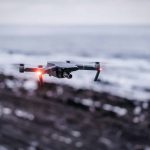The world is rapidly evolving, and so too are the technologies that shape our day-to-day lives. One piece of technology that has seen exponential growth in recent years is the unmanned aerial system (UAS), commonly known as a drone. From commercial use to military operations, drones have become increasingly prevalent. However, with their widespread use comes the need for effective anti-drone systems for defense and security purposes. These systems are designed to detect, track, and neutralize drones that pose a threat. In this article, you’ll learn about the latest advancements in anti-drone technologies and the market trends shaping this sector.
The Rising Importance of Anti-Drone Systems
With the rampant growth of drone technology, the need for corresponding anti-drone systems has magnified. Drones, while beneficial in many sectors, can also pose significant security threats. Unauthorized drones can be used for illegal activities such as espionage, smuggling, or even attacks. Anti-drone systems are thus crucial for maintaining security and defense in sensitive areas.
In parallel : How Is Drone Swarming Technology Being Used for Environmental Conservation Efforts?
The global anti-drone market is projected to experience substantial growth due to the increasing demand for these defense systems. With advanced detection and counter systems, anti-drone technologies are becoming more sophisticated, catering to various security needs across different sectors, from military to commercial.
Key Technologies in Anti-Drone Systems
There are several key technologies that underpin anti-drone systems. These technologies primarily focus on detection and countermeasures to neutralize potential threats.
Also to read : How Can Quantum Computing Enhance Complex System Simulation in Engineering?
Radar-based systems form the backbone of most anti-drone technologies. These systems use radar to detect and track drones. The latest advancements in radar technology, especially in the field of 3D radar, have significantly improved the accuracy and effectiveness of drone detection systems.
Beyond radar-based systems, other detection technologies such as Radio Frequency (RF) scanners, electro-optical sensors, and acoustic sensors also play a crucial role in identifying the presence of drones.
In terms of countermeasures, electronic jamming is a commonly used method to disrupt a drone’s control channels. Alternatively, anti-drone lasers can be used to physically disable or destroy drones. Some of the latest developments in this field include the integration of artificial intelligence (AI) and machine learning algorithms to enhance the responsiveness and accuracy of these counter systems.
The Influence of Military Applications on Anti-Drone Systems
The military sector is a major driving force behind the development and growth of anti-drone technologies. Drones have become a key part of modern warfare, used for surveillance, reconnaissance, and even direct attacks. As a result, there is a high demand in the military sector for effective anti-drone systems to neutralize these threats.
In response to this need, defense contractors and technology companies are investing heavily in research and development to introduce advanced anti-drone systems. These systems are designed to cope with complex battlefield scenarios and can detect and neutralize drones with high precision.
The influence of military applications on the anti-drone market is substantial, contributing to an increasing share in the overall market size. This sector is expected to continue driving the growth of the anti-drone market in the coming years, supporting the advancement of more sophisticated anti-drone technologies.
Commercial Applications of Anti-Drone Systems
While the military sector is a major contributor, the commercial sector too holds significant potential for the growth of the anti-drone market. With drones becoming more accessible, there’s an increasing need for anti-drone systems to ensure security in commercial settings, such as airports, stadiums, or private properties.
Commercial anti-drone systems primarily focus on detection technologies, alerting security personnel when a drone enters a restricted airspace. These systems can also employ countermeasures, like jamming the drone’s communication channels or taking control of the drone to safely land it.
The growing importance of drone security in commercial applications is stimulating the growth of the anti-drone market, encouraging the development of innovative and cost-effective anti-drone solutions tailored for commercial use.
The Future of Anti-Drone Systems
Looking ahead, the future of anti-drone systems appears promising. With the continual advancements in drone technology, the need for effective anti-drone systems will only intensify. This will fuel further growth and innovation in the anti-drone market.
Artificial intelligence and machine learning technologies will play a pivotal role in shaping the future of anti-drone systems. These technologies will enhance the effectiveness of detection and counter systems, helping to identify and neutralize threats with greater precision and speed.
In the coming years, we can anticipate a surge in the deployment of anti-drone systems across various sectors. From military to commercial applications, anti-drone systems will become an integral part of defense and security strategies, ensuring the safe and responsible use of drone technology.
The Challenges and Opportunities in Anti-Drone System Development
Developing effective and reliable anti-drone systems presents a series of challenges and opportunities. One of the key difficulties lies in the constant evolution of drone technology. Drones are becoming smaller, faster, and more resilient, which makes detection and neutralization efforts increasingly complex. However, this also opens up opportunities for innovation and development in the anti-drone market.
Incorporating active defense mechanisms is one approach to counter the advancements in drone technology. Active drone defense refers to the use of technologies that actively seek out and neutralize drone threats, as opposed to passive measures which merely alert to the presence of drones. Examples of active defense include directed energy weapons and counter UAS (Unmanned Aerial Systems) technologies which aim to neutralize or take control of the drone.
Another area of opportunity lies in the integration of AI and machine learning technologies. These technologies can significantly improve the performance of drone detection systems, enabling them to identify drones more quickly and accurately.
Furthermore, advancements in air defense technologies provide opportunities for cross-application into anti-drone systems. For instance, systems developed for detecting and neutralizing missile threats can be adapted to counter drone threats.
In terms of market opportunities, the global anti-drone market is expected to surge, with robust market growth anticipated in both the military and commercial sectors. The market share of anti-drone technologies in the overall defense system market is also predicted to expand, reflecting the rising importance of anti-drone systems.
Conclusion: The Future Outlook of the Anti-Drone Market
The future outlook for the anti-drone market looks promising. Given the ongoing advancements in drone technology and the increasing prevalence of drone threats, the demand for effective anti-drone systems is expected to rise.
In the military sector, the use of drones for surveillance, reconnaissance, and attack missions will continue to drive the demand for advanced anti-drone systems. This is likely to spur further research and development in this field, contributing to the market growth of anti-drone systems.
In the commercial sector, applications of anti-drone systems will continue to evolve. As drones become more integrated into everyday life, anti-drone systems will play a crucial role in ensuring safety and security in various commercial settings.
In terms of technology, AI and machine learning will continue to shape the development of anti-drone systems. These technologies will enhance the efficiency and accuracy of drone detection and counter systems, making them more effective at neutralizing drone threats.
Overall, the anti-drone market is poised for significant growth and innovation in the coming years. As the world continues to grapple with the challenges and opportunities presented by drone technology, anti-drone systems will become an essential component of defense and security strategies across the globe.








